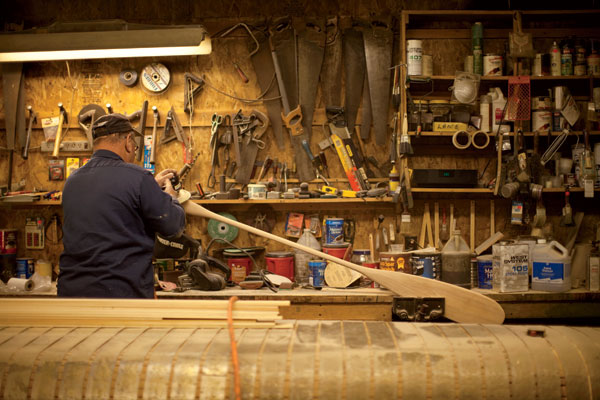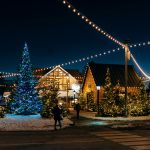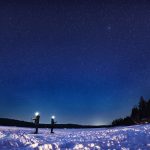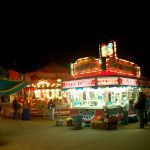Maine
Why the Registered Maine Guide Still Matters
An enduring symbol of the North Woods faces threats from technology and a new generation that values efficiency over tradition..

Coffee By Design | Portland, Maine
Photo Credit : Katherine KeenanVIDEO: Traditions of the Maine Guide
Nearly four decades ago, I tried to become a Maine Guide. I was a teenager attending a summer camp in western Maine, and for two summers running I was dropped off for a few days with other 14- and 15-year-olds at a testing camp along the shores of one of the Rangeley Lakes. “Testing camp” may be a bit grand. It was basically a damp slice of wild spruce forest filled with sharp, eye-level twigs and lorded over by bossy owls. And here our group of five or six feral teenagers were told to carve out an encampment, and then spend several days being observed and tested by Registered Maine Guides, who would decide whether we were fit for the Maine woods. It wasn’t a survival program. It was more like a home-economics program in which we learned to live comfortably in the Maine woods, which served as both home and supply depot. Leading up to test week, we were taught how to craft a drinking cup out of birch bark folded just so, how to bake a wild-blueberry cobbler by a roaring fire, how to prepare a bed of pine boughs that would contribute to pleasant dreams. We learned how to make coffee by putting grounds, some salt, and a whole egg into a battered, sooty pot, and then suspending it over (and later setting it in front of) a roaring fire. Through some sort of inscrutable alchemy, what emerged from the pot was not only potable but rather good, even to a 14-year-old. We essentially learned to tailor the Maine woods to fit us, and, more subtly, we were tailored to fit the Maine woods. The adults, as I recall, were a taciturn lot. During my canoe test, the guide spent 20 minutes staring silently at me while I paddled. I was unnerved not so much by his wordlessness as by the siege force of flies and mosquitoes that swarmed around him and landed on his face, and the fact that he made no effort to swat them away. I may have been there to learn about canoeing, but the lesson I took away was how to deal with what life gives you. The Junior Maine Guide program wasn’t one of those in which everyone got a certificate and a patch at the end proclaiming them to be a winner. Many teens–perhaps most–were notified (afterwards, by mail) that they’d failed. Today, the fashion is that no one should be declared a failure for fear of permanent scarring. That I actually failed twice–it was “map and compass” that tripped me up both years–and haven’t become a sociopath is heartening, although I suppose that the seed simply might not have germinated yet. But the program did plant another seed: a deep respect for the intricate Maine woods and the rituals by which you could make them your own. After attending schools and jobs along the mid-Atlantic seaboard, I moved to Maine and lived there year-round for nearly two decades. I still spend summers in eastern Maine, at the end of a long paved road in a small town that claims the highest percentage of Registered Maine Guides in the state. While a teen at testing camp, I labored under the assumption that the most important thing for me to do was to accumulate knowledge: Did jack pines have two, three, or five needles per cluster? But in the years since, I’ve realized that something far more important was occurring over those summers: the ritual of passing knowledge from generation to generation, from experienced guide to aspiring guide. I’d been paddling in a river I didn’t even know existed.In her 1999 book, Pip Pip: A Sideways Look at Time, the British author Jay Griffiths sketched out two ways of interpreting the past. There’s “artifact history,” she wrote, and “ritual history.” Most of us are familiar with artifact history. New England brims with house museums filled with bed warmers and boot hooks and forgotten china patterns. They’re durable curiosities, encrusted with the special sort of patina that results from the glazed looks of countless half-interested tourists. Ritual history, however, is far more perishable and elusive. It’s that continuation of an action performed by one’s grandparents and their grandparents. Ritual history tends to erode less noticeably–around the margins at first, like the banks of a river. Eventually the river shifts course, and few remember how it once flowed. The next generation thinks that the river has always flowed that way. That process is well underway with the guiding tradition. Change happens, of course. Older guides retire and hang up their paddles. Newer, younger guides bring different, more efficient methods. And the old sporting camps are sold to outsiders who haven’t been steeped in local knowledge and conventions. “That part bugs me,” says Dave Tobey, a longtime guide in Grand Lake Stream, the town where I spend my summers. “New lodge owners don’t follow tradition, which leaves an opening for new guides not to follow tradition. Then you have the option of going fishing in a tin boat versus a canoe, and fewer cookout lunches. It dilutes things, and it bothers me. It used to be as if these things were all etched in stone.” Tobey moved here from southern Maine in 1973 and learned about the woods from a host of experienced guides, who themselves had learned from their fathers. He gained a number of outdoor skills from them, such as how to read bear scratches on beech trees, but more so he learned how to adapt to the complex and woodsy world around him. “No wasted moves or wasted time,” he says. “That’s what I picked up from the older guides. They didn’t put on extra mileage or extra strokes on the paddle. Or extra words, either.” When Henry David Thoreau ventured on his third trip northward into Maine in the mid-19th century, with companion Edward Sherman Hoar, he hired Joe Polis, a 48-year-old Penobscot Indian guide, to lead him through the lakes and rivers to circle Mount Katahdin. In Thoreau’s “mossy and moosey” Maine woods, getting lost was more likely than not, so a guide was as essential as matches and compass. Polis was more than just a directional beacon, though; he was an adept interpreter of the natural world around him. He taught Thoreau about the variations of biting flies that pestered them, and how to distinguish between types of spruce by touch. He could see trails in the woods that were invisible to others. At times, Thoreau wrote, Polis “would step into the canoe, take up his paddle, and, with an air of mystery, start off, looking far downstream, and keeping his own counsel, as if absorbing all the intelligence of forest and stream into himself.” Polis served as a translator between Thoreau and the often hard-to-decipher text of the Maine woods. In the decades following, the traditional guide built upon the Polis template, adding skills honed during careers as loggers living in and working the woods. During the late 19th and early 20th centuries, when the nation was afflicted with a sudden mania for brook trout, Maine Guides became revered for their uncanny ability to lead anglers to fish. “The typical Maine Guide is just as much a product of the soil as are the mighty forests,” wrote Herbert Jillson in Outing magazine in 1901, “and his replica is not to be found elsewhere.” The State of Maine began officially licensing guides in 1897 (and still does so today), which ensured that visitors would get a guide both skilled and experienced. Early guides became licensed through a sort of informal apprenticeship system, picking up forest skills from a previous generation. Amply outfitted with handed-down experience, the Maine Guide became an icon in the popular imagination, the Far Northeastern variant of the Western cowboy. Instead of a ten-gallon hat and a lariat, he had a plaid jacket and rubber-soled leather boots. Judging by numbers alone, the craft of guiding is as healthy now as ever. Don Kleiner, head of the Maine Professional Guides Association, says that membership in his group has held steady for some time: about 800 registered guides of late (out of the 4,000 or so who are licensed in the state). But that number includes not only traditional hunting and fishing guides but many of the newer breed, too–younger guides who wear Gore-Tex and lead whitewater rafting trips on the northern rivers and sea-kayaking trips along the coast. And then, too, a lot of those not in the association just think it would be neat to be a Registered Maine Guide, taking the tests and getting a patch, but they rarely guide anyone.
Woodie Wheaton grew up next to the dam where Grand Lake Stream flows out of West Grand Lake. He was a son of Arthur Wheaton, a noted guide during the brook-trout era, and may have had a hand in inventing the Grand Laker, a heavy, square-sterned wood-and-canvas canoe designed for traversing big, wild, rocky waters. These handsome, sturdy boats are still handmade in garages hereabouts and are still used by area guides. Woodie started guiding when he was 14, and continued guiding for 68 years. In the 1940s, some of his clients convinced him that he should build his own fishing lodge. So he bought some shoreline in Forest City on East Grand Lake, along the headwaters of the St. Croix River, about an hour northeast of where he’d grown up. He built a dining room and a kitchen, plus a handful of cabins he could rent out to fishermen. Woodie raised three sons–Art, Lance, and Dale–all of whom also became Maine Guides, and all of whom are still guiding today. If such a thing as a Maine Guide aristocracy existed, the Wheatons would be its Windsors, living in a log castle on a hill, perhaps with a family coat of arms featuring crossed paddles under a recursant loon. I recently drove up to visit the Wheaton brothers to see where guiding was now and where it might be headed. Forest City is where the United States runs out; if you accidentally drive past the three shorefront houses where the Wheatons live, you’ll soon find yourself at a booth where someone will welcome you to Canada. You’ll find another sort of dead end here, as well. The brothers are in their late 60s and early 70s. Dale owns Wheaton’s Lodge, the place built by his father; Lance has his own sporting lodge called Village Camps just down the lake; Art, now retired from his position as a marketing executive at Remington Arms, built an impressive home next to Wheaton’s Lodge (some locals refer to it as “the Log Mahal”) and now guides occasionally during the summer. All three have children, and all the children have one thing in common: None is interested in carrying on the guide tradition. Both sporting camps are for sale.

Photo Credit : The Bros. Kozowyk

Photo Credit : The Bros. Kozowyk
“Once it’s gone, it’s gone,” says Art Wheaton, as we sit on his lakefront porch in Forest City. “In 1945, when my family came here, there were hardly any camps over there,” he says, pointing across East Grand Lake, where the pitch-black night is now speckled with lights. “There are about 140 or 150 camps there now. Good, bad, or indifferent, when you superimpose the population on a resource, you eat it up. If you don’t believe that, just drive down to Sebago Lake. When did that start to disappear? In the ’40s? ’50s? From Augusta, Maine, south to Miami, Florida, there just ain’t no more.”

Photo Credit : The Bros. Kozowyk
Lance Wheaton and I are driving down a single-track road lined with birch trees; within a few minutes we reach an open area along a silvery stretch of water a few hundred yards wide. Just across the way is New Brunswick, which looks a whole lot like Maine: rocky shore, spruce, white pines, a few birch. Wheaton swings his Chevy Silverado into the trees, then expertly backs the trailer down a rocky spit to deposit his Grand Laker into the water while scarcely looking in the rear-view mirror. “We might get a salmon,” is among the things he says as he glances at the clouds. The light is lambent under scudding clouds, and the wind is gentle, wafting down the ridge from the southwest. Crows are sounding off across the way. I climb aboard from a handy rock, and Lance paddles out a few dozen yards before dropping the outboard and speeding us out into the channel. I spot a few battered shoreline homes the color of moss, but soon it’s just pine and spruce and rocky shores. “Where there are camps, the conversation changes,” Lance says. “People say, ‘Look how long that dock is,’ or ‘Hey, that dock’s got lights on it,’ or ‘Look at that American flag someone painted on that rock.’ Here, though, they ask, ‘You ever seen a moose walking along the shore?'” Lance’s Grand Laker is a 21-footer that he built for himself 14 years ago. Inside it’s aged to a pale tawny hue. Lance has made more than a dozen of these boats. This one was weighted to balance his not-inconsiderable bulk–he has the physique of a retired football player–although he grouses that now he’ll have to reconfigure the next one to accommodate the new, heavier four-stroke outboards. Over the next couple of hours we catch a mess of perch, then around noon pull up to Monument Island, where we scramble over gray rocks and through marsh grass flecked with tiny white and yellow flowers. There’s a small clearing in the middle, with a picnic table and a fire pit. Massive yellow birches, too big to put your arms around, dot the island. Lance pulls out some dry firewood he carries in a plywood box, then shaves three sticks with his knife, stacks them like a pinwheel, and lights one match. The fire blazes. A few minutes later, he dredges the filleted perch in cornmeal, salt, and pepper, and fries it in oil. It comes out crisp, not the least fishy-tasting, as light as potato chips. “I like to cook fish that come out of water you can drink,” he says. Younger fishing guides who lack connections to the land and the past are more likely to be products of the modern age, Lance says, and they repeat what they’re familiar with: They pack along sandwiches made with supermarket cold cuts, which they hand to clients, who eat one-handedly with rods still in the water. It’s efficient and allows more fishing time for those from the city following the “work hard, play hard” mantra. The modern guides are supplying today’s market with what it wants, although it’s hard not to wonder about what’s being lost in the process. One of the things I recall learning in my failed effort to become a Junior Maine Guide was how to make that pot of guide coffee, and I’m pleased to see Lance quietly set about making it. Just before the pot heats to a rolling boil, he cracks open an egg into the coffee grounds, then dumps the chestnut-colored slurry into the coffee pot, which he sets on the ground in front of the fire. “It sets up a percolating action,” he explains. And so it does: The water boils up the hot side and down the cool side. The egg rounds out the bitterness, he says, and helps bind the grounds so that they sink quickly to the bottom when the pot’s pulled from the fire. No filter needed; less to pack or worry about. No one really knows who invented Maine Guide coffee, but this is how it’s been done out on the lakes since anyone can remember. Lance at last pours us two steaming cups. “You’re working with all these old guys, and then one day you look around and you are the old guy,” he says. “I never thought I’d be doing this at 66.” He hands me a cup, then takes a sip of his own. “It’s a little weak,” he announces. “I like it when a spoon stands up in it.”








Outstanding piece. I can related to Dale’s story of how guests (Sports) evolve for year to year, as I am one of those guests! I just took Dale’s explanation a bit further. I came to Wheaton’s as a guest in 1989, with a Walmart combination spinning rod and reel. From 1989 through 1994 we hired guide’s out of the lodge and in that time frame, I learned the traditions of ‘The Maine Guide’ from these Maine Guides! I got my Guide License in 1998 (I think it was that year?) but promote myself as a guided for a few years after that, before I charge a Sport for a day on the lake as a Guide i had re-newed my License at least once, because I still had lessons to learn! I believe I did, well I’ve gotten to know everyone listed in this piece and have fished or hunted with one of them at different times over the years and each time, I’m fortunate enough learn something new! Fast forward to today, I have a Fly Rod for every occasion, i tie about 2,000 streamer Flies a year, I own a 1978 Lance Wheaton Grand Laker, a 2013 Dale Tobey Grand Laker, and Lance is Building me a brand new 2017 Grand Laker! Art and Lance is 100% correct, Seboga Lake is lost to traditional guiding, and Sports and those Guides a like are more than happy to hand you a supermarket sandwich and call it a Shore Lunch. Well, i learned for the Wheaton’s and the boys over at Grand Lake Stream, and that’s not a Shore Lunch! Anyone who has thought about coming up to Maine to fish or hunt, and hire a Maine Guide, my recommendation is come all the way up to our area so you can experience a real Traditional Maine Guide experience!